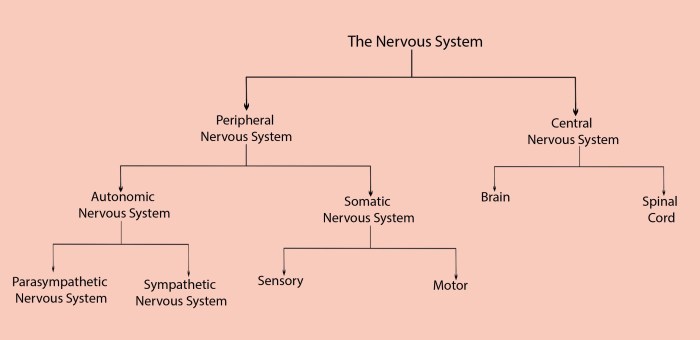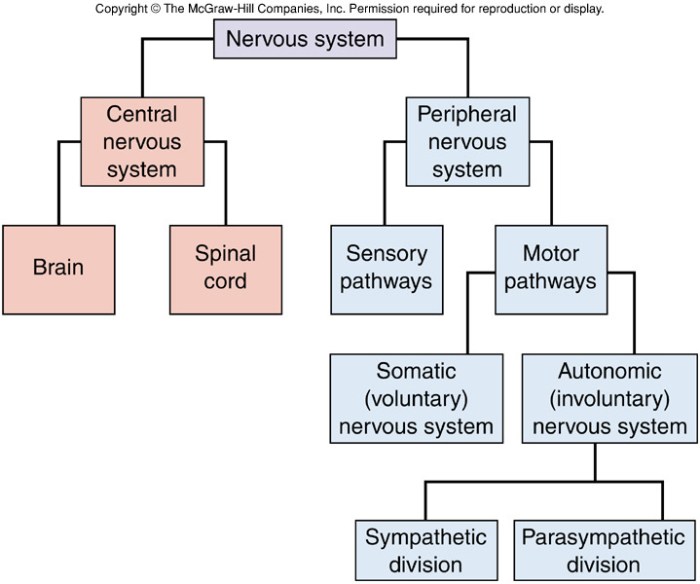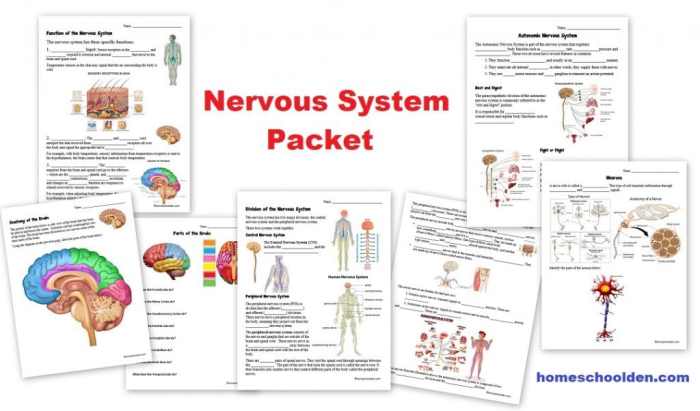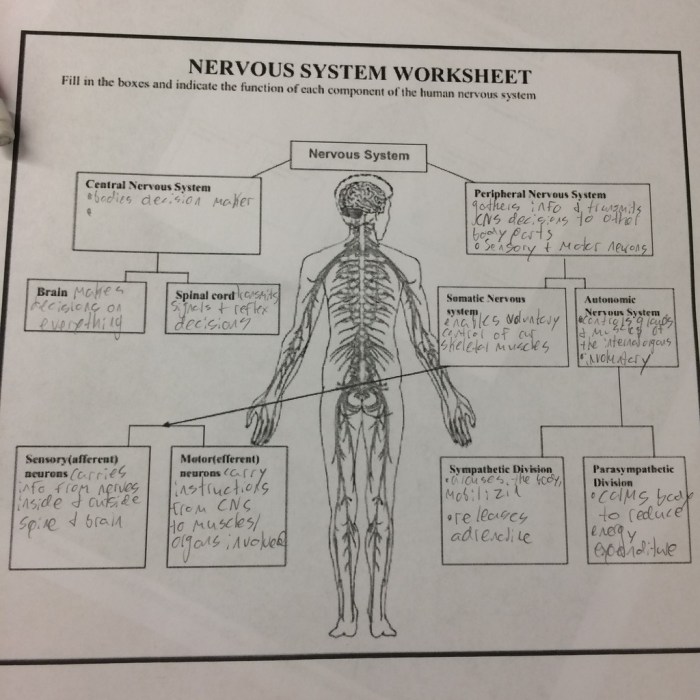Embarking on an exploration of the organization of the nervous system worksheet, this comprehensive guide delves into the intricacies of the body’s control center, unraveling its structure, functions, and disorders with meticulous precision.
The human nervous system, a marvel of biological engineering, governs every aspect of our being, from conscious thought to involuntary reflexes. Understanding its organization is paramount to comprehending the complexities of human physiology and behavior.
1. Introduction
The organization of the nervous system worksheet serves as a valuable resource for understanding the complex structure and functions of the nervous system. This comprehensive guide provides a structured overview of the major divisions, components, and disorders associated with the nervous system.
2. Components of the Nervous System

The nervous system is broadly divided into two main divisions: the central nervous system (CNS) and the peripheral nervous system (PNS). The CNS comprises the brain and spinal cord, while the PNS encompasses all the nerves that extend from the CNS to the rest of the body.
3. Central Nervous System
Brain
The brain, the central processing unit of the nervous system, is enclosed within the skull and protected by the meninges. It is responsible for higher-order functions such as consciousness, cognition, emotions, and voluntary movements.
Spinal Cord
The spinal cord, a cylindrical structure protected by the vertebral column, serves as a conduit for sensory and motor information between the brain and the rest of the body. It also houses neural circuits that control simple reflexes.
4. Peripheral Nervous System: Organization Of The Nervous System Worksheet

Somatic Nervous System
The somatic nervous system controls voluntary movements of skeletal muscles. It consists of sensory neurons that transmit sensory information to the CNS and motor neurons that carry commands from the CNS to the muscles.
Autonomic Nervous System
The autonomic nervous system regulates involuntary functions such as heart rate, digestion, and blood pressure. It is further divided into the sympathetic and parasympathetic divisions, which generally have opposing effects on target organs.
5. Divisions of the Autonomic Nervous System

Sympathetic Nervous System, Organization of the nervous system worksheet
The sympathetic nervous system, activated during stress or “fight-or-flight” responses, increases heart rate, dilates pupils, and inhibits digestion.
Parasympathetic Nervous System
The parasympathetic nervous system, activated during rest and “rest-and-digest” responses, decreases heart rate, constricts pupils, and stimulates digestion.
6. Disorders of the Nervous System

Central Nervous System Disorders
Common CNS disorders include stroke, Alzheimer’s disease, Parkinson’s disease, and multiple sclerosis.
Peripheral Nervous System Disorders
Common PNS disorders include Guillain-Barré syndrome, carpal tunnel syndrome, and peripheral neuropathy.
User Queries
What is the purpose of the nervous system?
The nervous system is responsible for coordinating and regulating all bodily functions, including movement, sensation, thought, and emotion.
What are the major divisions of the nervous system?
The nervous system is divided into two main divisions: the central nervous system (CNS) and the peripheral nervous system (PNS).
What is the function of the brain?
The brain is the control center of the body, responsible for processing information, regulating vital functions, and generating thoughts and emotions.
What is the function of the spinal cord?
The spinal cord transmits signals between the brain and the rest of the body, allowing for voluntary and involuntary movements and reflexes.